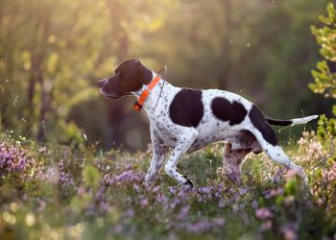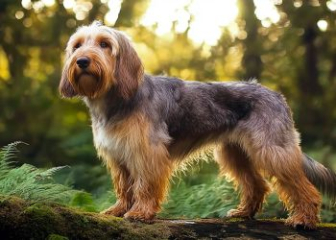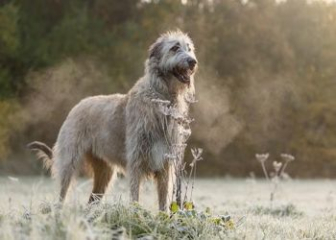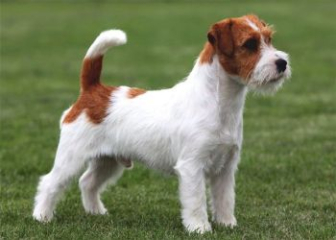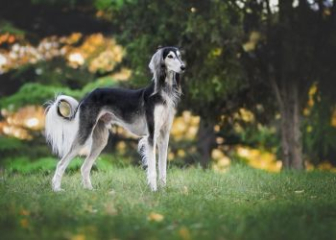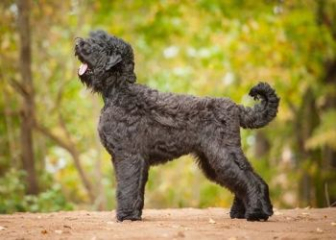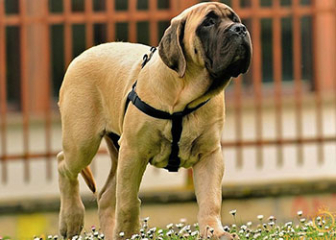Cocker Spaniel – The Adorable, Friendly Little Hunting Dog
Blog | by
The Cocker Spaniel, also known as “Cockers,” is a charming short-legged hunting dog from Spain, known for its cute appearance, long silky coat, intelligence, and friendly temperament. They typically live 11–12 years.
The Cocker Spaniel is a beloved hunting breed that originated in Spain. With their soft, long coat and gentle, loyal personality, Cockers make wonderful family pets as well as working dogs in roles such as police or military service.
If you'd like to learn more about the Cocker Spaniel, follow the detailed article below from Dog breed.
Where Does the Cocker Spaniel Come From?
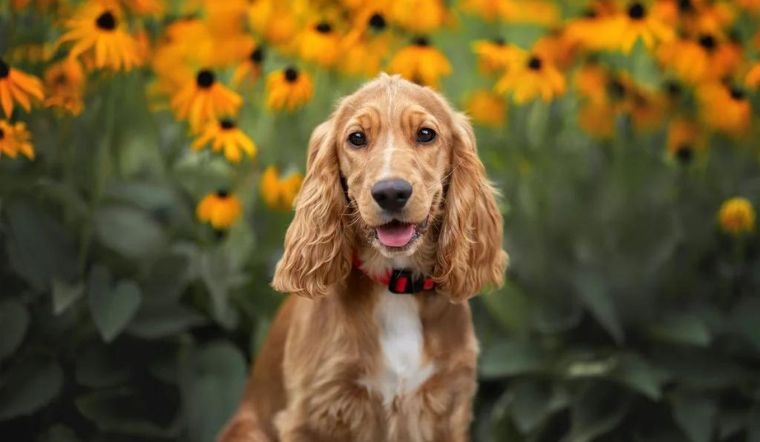
The Spanish Cocker Has a Beautiful Appearance
The Cocker Spaniel is a hunting dog breed from Spain, belonging to the Spaniel group (flushing/retrieving dogs with long ears and dense coats). This breed originated in the Middle Ages, initially used for hunting small game like birds, rabbits, foxes, and especially woodcock—which is also the origin of the name “Cocker.” Their average lifespan is around 11–12 years.
Development History of the Cocker Spaniel
-
14th–15th centuries: Spaniels first appeared in Spain, but were later brought to England, where they were further developed.
-
18th century: The breed split into two distinct lines: Springing Spaniel and Cocking Spaniel, created by crossing Spaniels with the short-legged, long-coated Blenheim breed of England.
-
1892: The British Kennel Club officially recognized the Cocking Spaniel as a distinct breed.
-
20th century: The Cocking Spaniel was introduced to the United States, where it continued to evolve and was further refined.
Today, due to their intelligence, agility, and cute appearance, Cocker Spaniels have become popular worldwide—not only as family pets but also as show dogs, sport dogs, and even movie stars.
Although the Cocker Spaniel originally comes from Spain, the breed was mainly developed in England, which is why many people mistakenly believe it is a British breed.
See also: Basset Hound – The adorable, short-legged, long-eared hunting dog
How Many Types of Cocker Spaniels Are There?
Today, the Cocker Spaniel is recognized in two main varieties:
-
English Cocker Spaniel
-
American Cocker Spaniel
Although they share a common origin, the two were developed with different purposes, leading to differences in both appearance and temperament.
English Cocker Spaniel
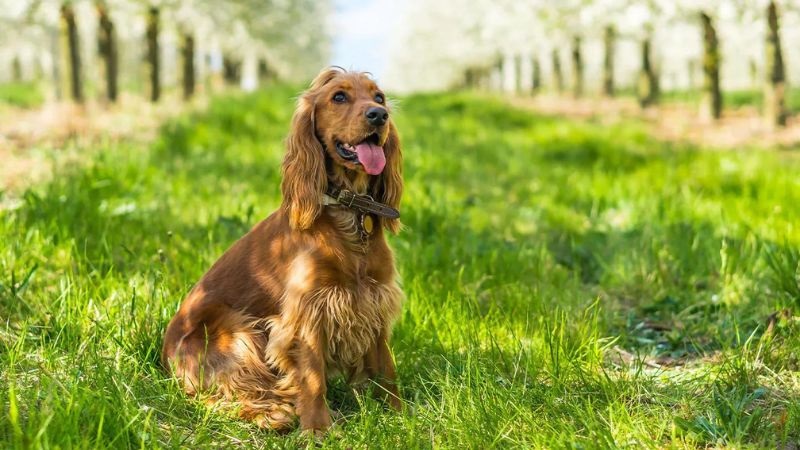
English Cocker Spaniel
This is the variety that stays truest to the original hunting breed characteristics.
-
More slender and athletic body compared to the American Cocker.
-
Superior hunting ability.
-
Long coat, but not overly thick.
-
More energetic and active than the American Cocker, with strong hunting instincts and a love for outdoor activities.
-
Well-suited as a gun dog or sporting dog.
American Cocker Spaniel
The Charming Appearance of the American Cocker Spaniel
This version of the Cocker Spaniel is considered the "gentler" counterpart to the English Cocker and is more suited for life as a family pet.
-
Smaller, rounder body than the English Cocker.
-
Shorter muzzle and rounder head, giving a cuter, more endearing look.
-
Very thick and curly coat.
-
Gentle, affectionate temperament, less active than the English Cocker.
-
Ideal as a companion dog and great for dog beauty shows.
Physical Characteristics of the Cocker Spaniel
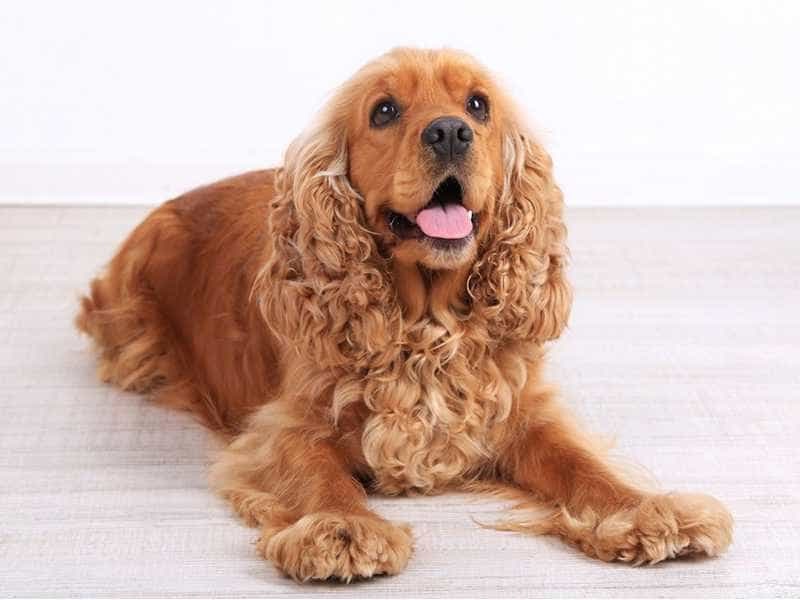
The Cocker Spaniel Has a Thick, Silky Coat
The Cocker Spaniel is a beautiful and adorable breed, known for its long floppy ears, soft, silky coat, and large, sparkling round eyes. Let’s take a closer look at the physical features of a purebred Cocker Spaniel:
-
Height: 38–41 cm
-
Weight: 12–13 kg
-
Head: Slightly elongated, with clearly defined sections—skull, muzzle, and nose—with a slight rise at the back of the head
-
Nose: Straight, wide, black in color
-
Eyes: Large, round, non-protruding, hazel or dark brown in color
-
Ears: Long, hanging below the neck, wide, with long soft hair
-
Neck: Long, slightly arched, muscular
-
Body: Short back, strong hips, rounded and muscular rear, broad and deep chest
-
Tail: Moderately long, slightly curved
-
Coat: Long, straight (not wavy), thick
-
Coat Colors: Black, golden tan, cream; usually has a white spot on the chest; darker coloring along the back compared to the sides, head, and legs
-
Movement: Graceful, light, and agile
Temperament of the Cocker Spaniel
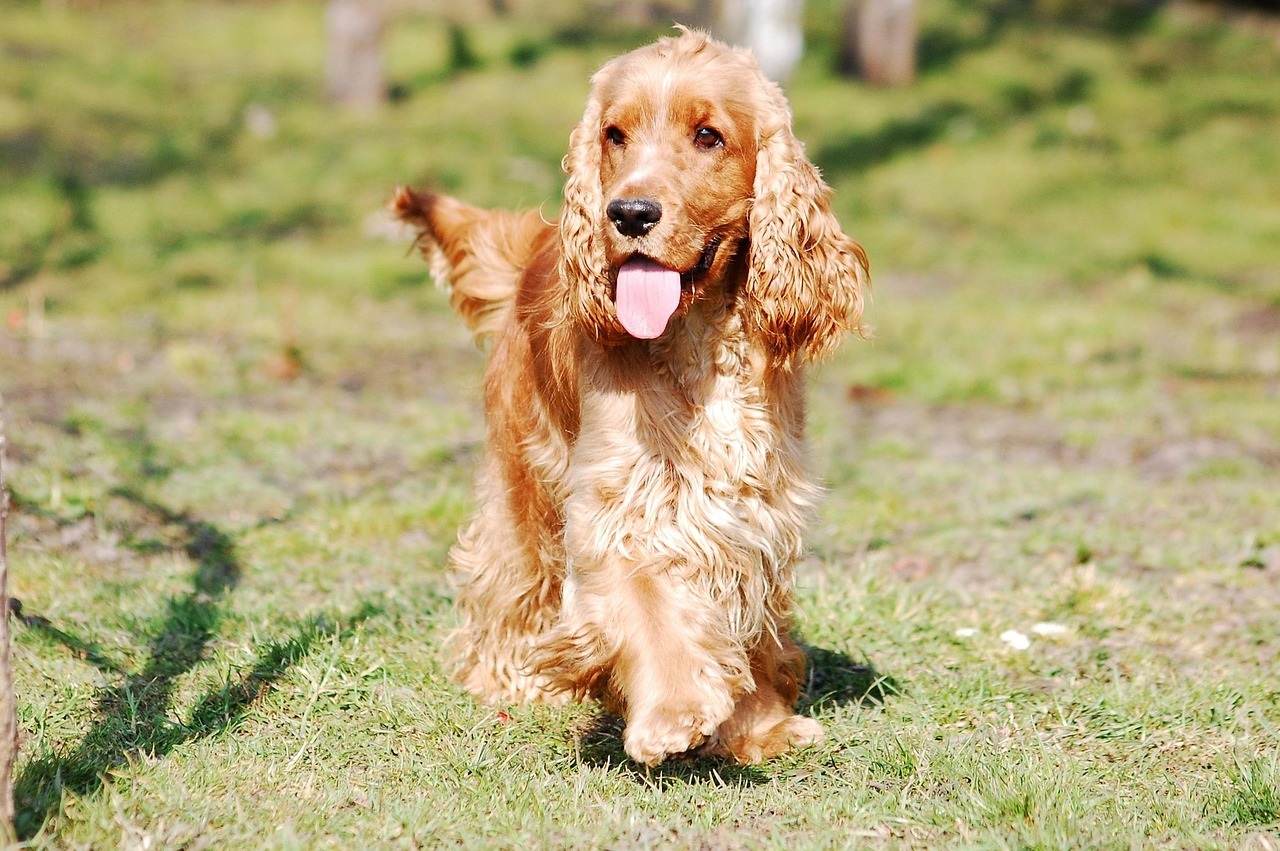
The Spanish Cocker Spaniel Is Very Friendly and Gentle
The Cocker Spaniel is an intelligent, gentle, and loyal dog—but also quite sensitive. Let’s explore more about the unique personality traits of this charming breed:
Energetic and Playful
Being a hunting breed, the Cocker Spaniel is full of energy and loves to run and play. They enjoy games like chasing, swimming, playing fetch, and going on walks or runs with their owners. Without regular exercise, they can become bored and potentially destructive.
Excellent Sense of Smell
As a former hunting dog, the Cocker has a highly sensitive nose. Thanks to their small, agile build and sharp scenting ability, they are sometimes used as detection dogs at airports to help sniff out illegal substances or contraband.
Sensitive and Emotionally Aware
Cocker Spaniels are very emotionally sensitive. If scolded or treated harshly, they can become sad, frightened, or even withdrawn. It's important to use positive reinforcement methods such as praise and rewards rather than harsh discipline during training.
Gentle and Friendly
Cockers are famously affectionate—especially toward children. They love being cuddled and enjoy getting along with other pets, including cats and dogs.
Loves Water and Swimming
Unlike some other companion breeds, Cocker Spaniels adore water. If given the chance, they’ll happily jump into a pool or pond to play and swim.
Friendly but Protective
Though they’re friendly and sociable, Cocker Spaniels still retain protective instincts. They are watchful of strangers and will bark to alert their owners of unusual activity. However, they rarely show aggression—barking is more of a warning than a threat.
Proper Care for a Cocker Spaniel
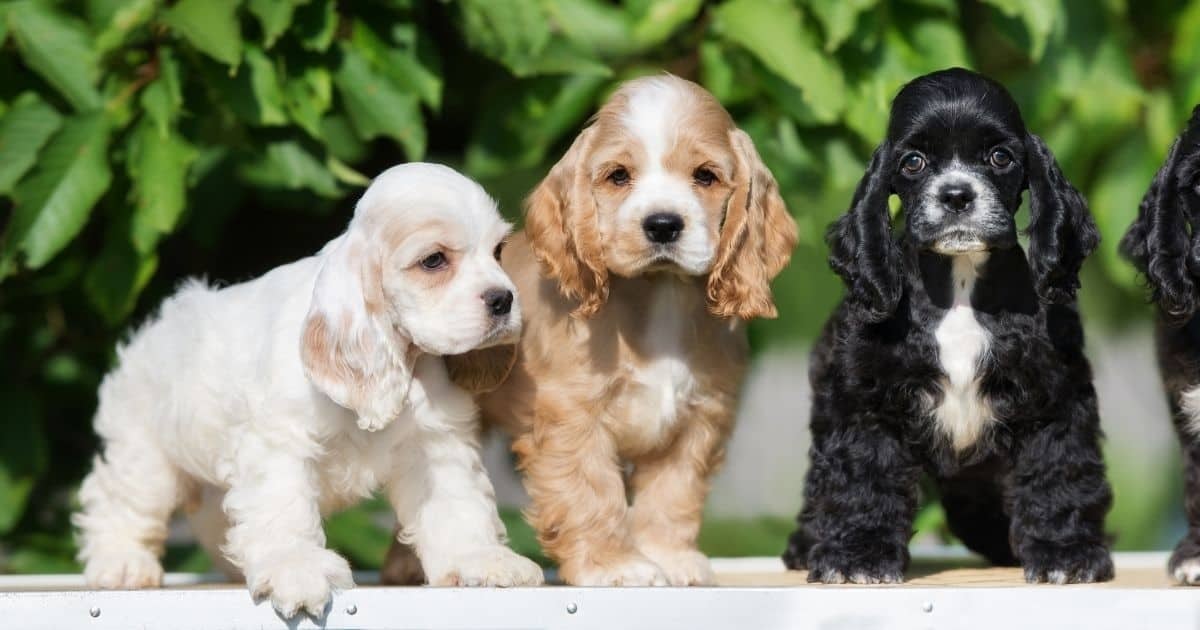
Cocker Spaniel Puppies Need Careful Attention to Grow Up Healthy
Cocker Spaniels require special care to maintain their beautiful appearance, silky coat, and good health. Let's explore the essential care tips below:
Best Nutrition Plan for Cocker Spaniels
A balanced diet is crucial for Cocker Spaniels to avoid obesity and maintain a shiny, healthy coat.
Nutritional Needs:
-
Protein: 50–70% of the diet – from beef, chicken, pork, fish, eggs
-
Fat: 10–15% – from fish oil, olive oil, animal fats (used in moderation)
-
Carbohydrates: 15–20% – from whole grains, sweet potatoes, brown rice, bread
-
Fiber & Vitamins: 10% – from vegetables like pumpkin, carrots, cabbage, broccoli
-
Fresh Water: Always available
Feeding by Life Stage:
Puppies (2–6 months):
-
4 meals per day
-
Soft, easily digestible food: porridge, finely chopped vegetables
-
Add calcium, DHA, omega-3
-
Goat milk or special puppy formula is okay
-
Avoid small bones, raw organs, and cow's milk
Adults (6 months–7 years):
-
2 meals per day
-
High in protein and good fats, with vitamins and minerals
-
Limit carbs to prevent obesity
-
Add cheese, unsweetened yogurt
-
Avoid overly spicy, salty, sweet, or oily foods
Seniors (7+ years):
-
2 meals per day
-
Reduce fat, balance carbs to prevent weight gain
-
Lower protein intake and avoid organ meats to reduce liver/kidney strain
-
Increase greens and fruits
-
Add boiled eggs, unsweetened yogurt
If you don’t want to cook fresh food daily, you can choose high-quality dry kibble formulated with rich animal protein and balanced nutrients.
Grooming & Hygiene for Cocker Spaniels
Cocker Spaniels have long, silky coats. To keep them beautiful, pay close attention to their grooming and hygiene:
-
Brush 3–4 times/week or daily during shedding periods
-
Use a soft, wide-tooth comb to prevent tangles
-
Trim coat as needed—especially around ears, eyes, paws, and bottom
-
Clean ears weekly to prevent infections
-
Use cotton or a damp cloth to wipe eye discharge
-
Brush teeth 2–3 times/week or daily if possible
-
Too busy? Take your Cocker to a pet grooming spa for regular care
Exercise & Training for Cocker Spaniels
Cocker Spaniels are active dogs who need daily movement and proper training:
-
Minimum 30–60 minutes of exercise/day
-
Activities: walks, jogs, swimming, fetch
-
Start training from 8 weeks old with basic commands (sit, stay, come...)
-
Socialize them early with strangers, kids, and other animals to reduce shyness or aggression
Ideal Living Conditions for Cocker Spaniels
-
Best suited for spacious homes or apartments with access to a yard
-
Needs daily outdoor walks and playtime
-
Not ideal for tight spaces or extreme weather (too hot or too cold)
Vaccination & Health Care
To keep your Cocker Spaniel healthy, follow a proper vaccination and vet check-up routine:
-
5-in-1 vaccine: 6–8 weeks old; 2nd dose at 10–12 weeks
-
7-in-1 vaccine: 8–10 weeks old; 2nd dose at 12–14 weeks
-
Rabies vaccine: From 3 months old; annual booster
-
Flea/tick prevention drops
-
Deworming every 3–6 months
-
Routine health checkups
Should You Own a Cocker Spaniel?
The Cocker Spaniel is a great companion for those who want a cute, intelligent, and friendly dog, especially for families with children. They love playing and being around people.
However, you must have time to play with them and groom their coat regularly.
If you’re often busy and can’t dedicate enough time for care and grooming, you should reconsider if this breed suits your lifestyle.
Common Health Issues in Cocker Spaniels
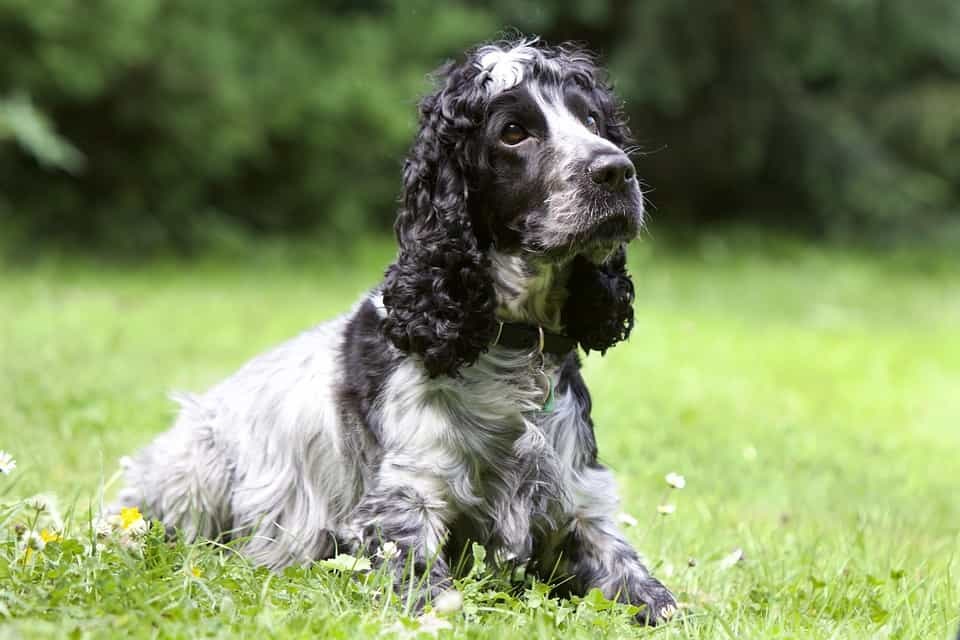
Cocker Spaniels Are Prone to Hereditary Diseases and Skin/Ear Infections
Below are some common hereditary and external-environment-related illnesses that frequently affect Cocker Spaniels. Understanding these can help you prevent and treat them early for your beloved pet:
1. Otitis Externa (Outer Ear Infection)
Common in floppy-eared breeds like the Cocker Spaniel.
-
Cause: Long, droopy ears create a moist environment for bacterial growth—especially if not cleaned regularly.
-
Symptoms: Frequent ear scratching, head shaking, foul odor, discharge from the ears.
-
Prevention & Treatment: Clean ears weekly and ensure they’re completely dry after bathing or swimming.
2. Cataracts
A common inherited condition, especially in senior Cockers over 6 years old.
-
Cause: Genetics, aging, or long-term eye infections.
-
Symptoms: Cloudy or grayish eyes, poor vision, frequent stumbling.
-
Prevention & Treatment: Supplement with omega-3; schedule regular eye check-ups.
3. Obesity
Cockers are prone to obesity if overfed or not exercised regularly.
-
Cause: High intake of carbs/fats, lack of exercise, aging.
-
Symptoms: Rapid weight gain, bloated belly, laziness.
-
Prevention & Treatment: Control diet, reduce carbs/fats, and maintain daily physical activity.
4. Other Common Hereditary Diseases
-
Hip Dysplasia: Genetic disorder that causes joint issues and walking difficulties.
-
Hypothyroidism: Causes obesity and excessive shedding.
-
Heart Disease: Often linked to obesity or hereditary factors.
How Much Does a Cocker Spaniel Cost?
Cocker Spaniel prices vary depending on origin, purity, coat color, and documentation. Here's a general price guide:
| Origin & Type | Price (VND) |
|---|---|
| Purebred Cocker Spaniel, fully vaccinated | 3 – 6 million |
| Cocker Spaniel with VKA certification | 8 – 10 million |
| Imported from Europe with full documentation | Over 1200 USD |
| Rare coat colors (white, chocolate – Vietnam) | 5 – 8 million |
| Mixed-breed Cocker Spaniels (unknown origin) | 1 – 3 million |
Important Tips When Buying a Cocker Spaniel
-
Choose a reputable breeder or store: Always buy from trusted sources to ensure proper health, origin, and fair pricing.
-
Check documentation: Ask for pedigree papers and vaccination records.
-
Avoid cheap offers: Too-good-to-be-true prices often indicate non-purebred dogs or those with health issues.
Most Beautiful Cocker Spaniel Images
If you'd like to admire some adorable, beautiful Cocker Spaniels, don’t miss the photo collection we’ve shared below!
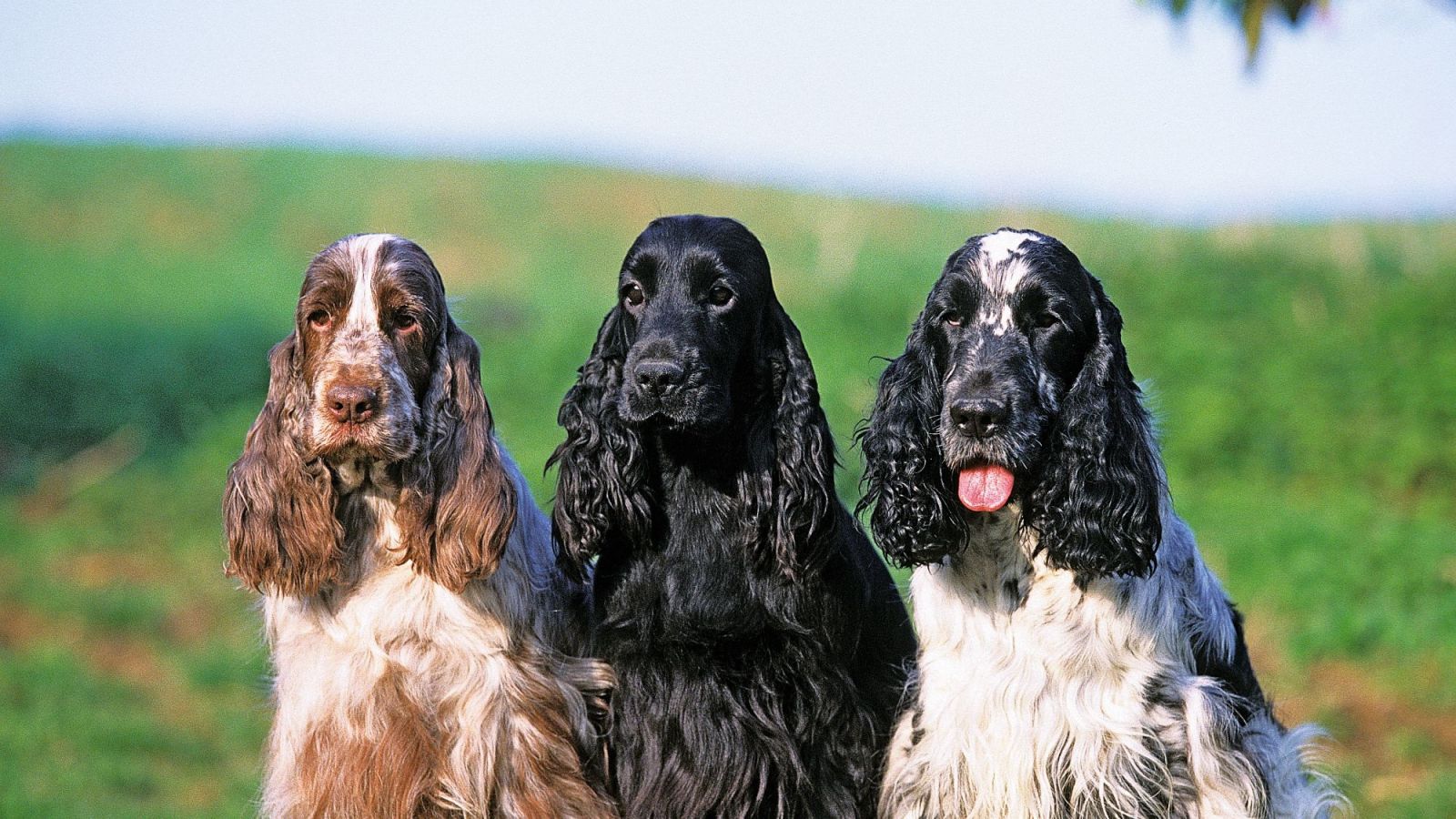
Three Cocker Spaniel puppies with three different coat colors.
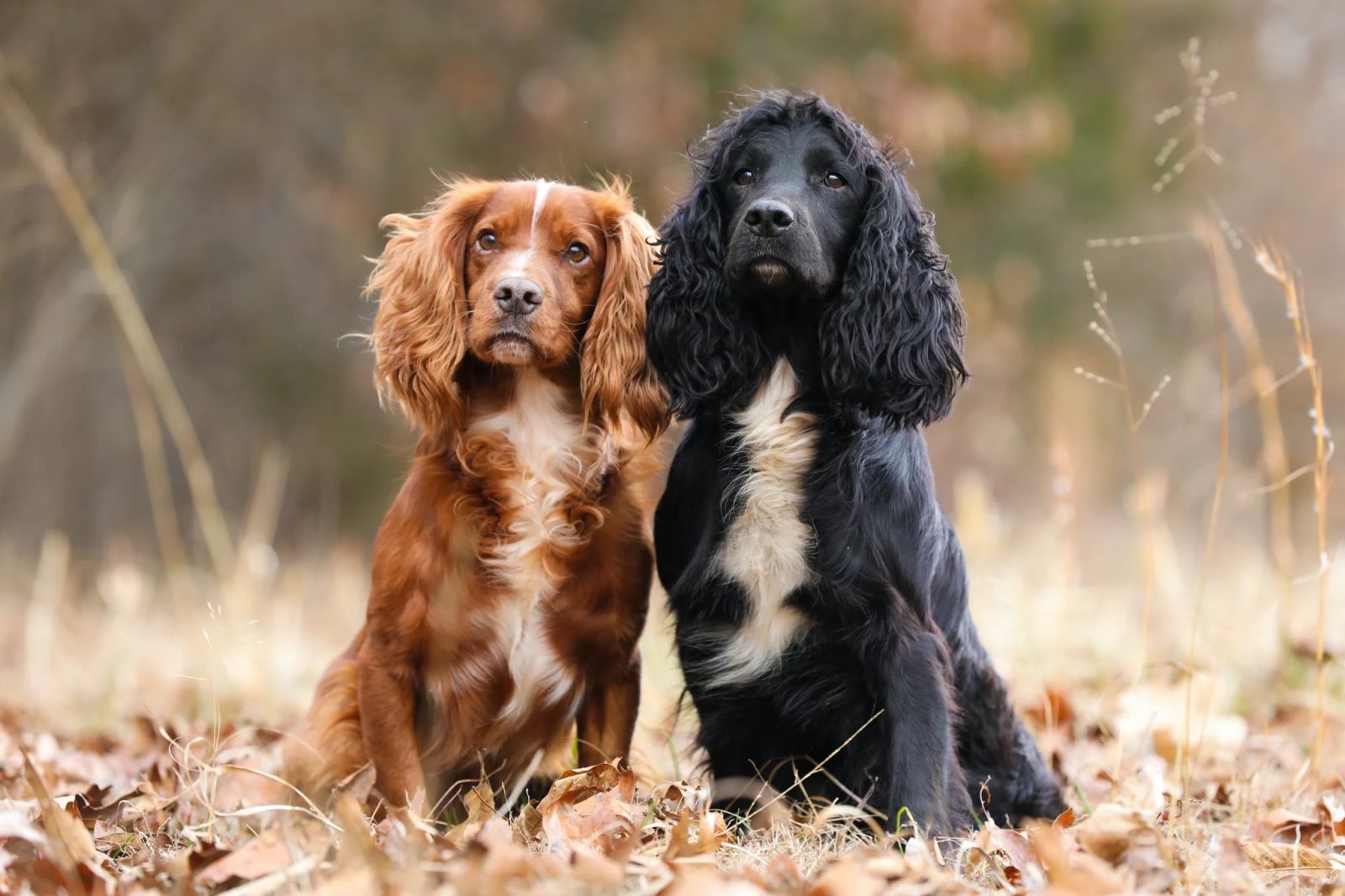
Best friends: a brown and a black Cocker Spaniel.
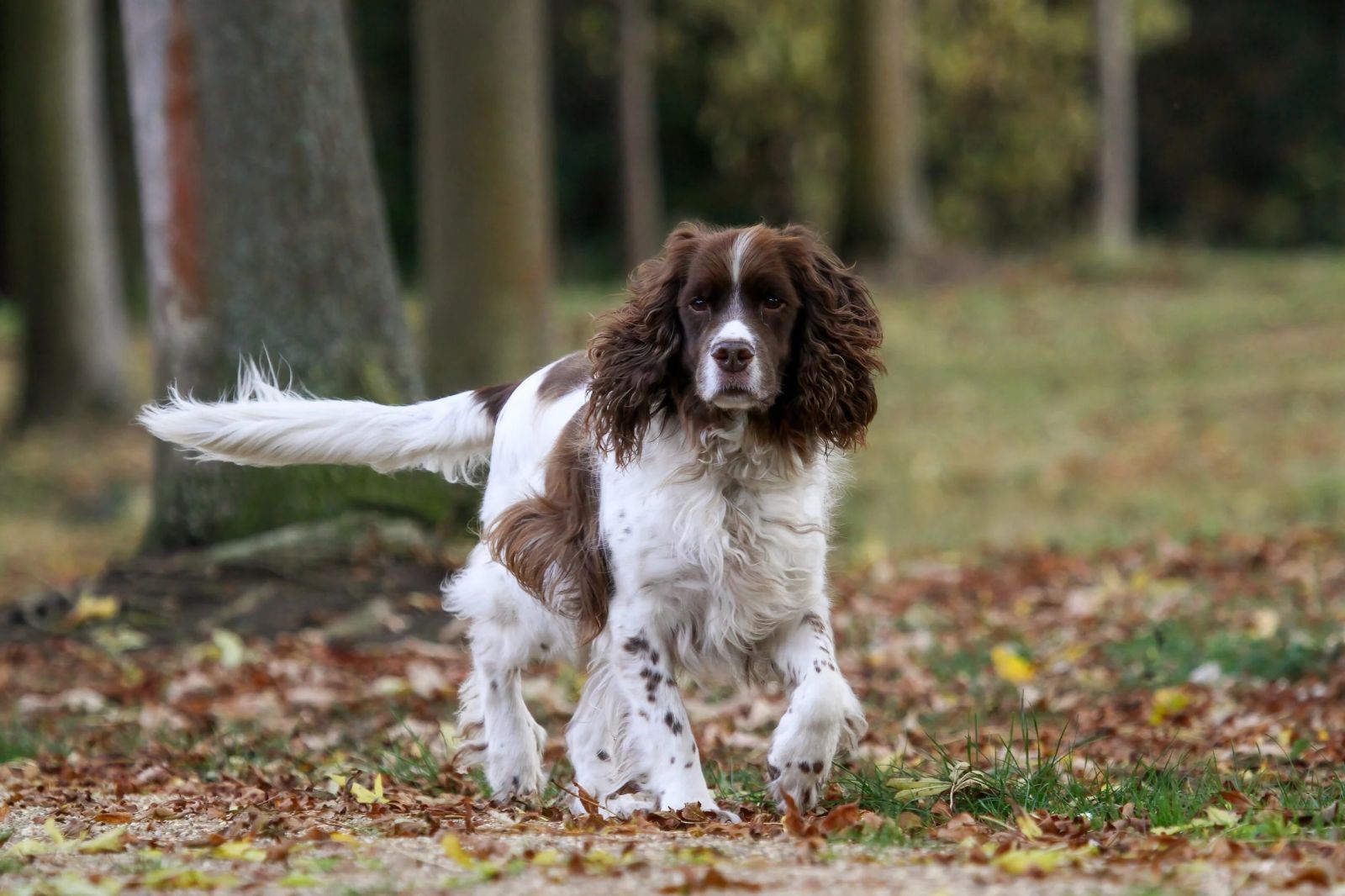
A beautiful and striking English Cocker Spaniel
With all the information shared above by dogbreed.wiki about the Cocker Spaniel, we hope you now have a good understanding of this breed’s origin, appearance, temperament, and characteristics.
If you’re looking for a lovely, intelligent, and energetic companion, the Cocker Spaniel is truly a perfect choice!
Want to explore more dog breeds from hunting dogs to companion dogs and working dogs?
Don’t forget to visit our Blog section for more exciting articles!
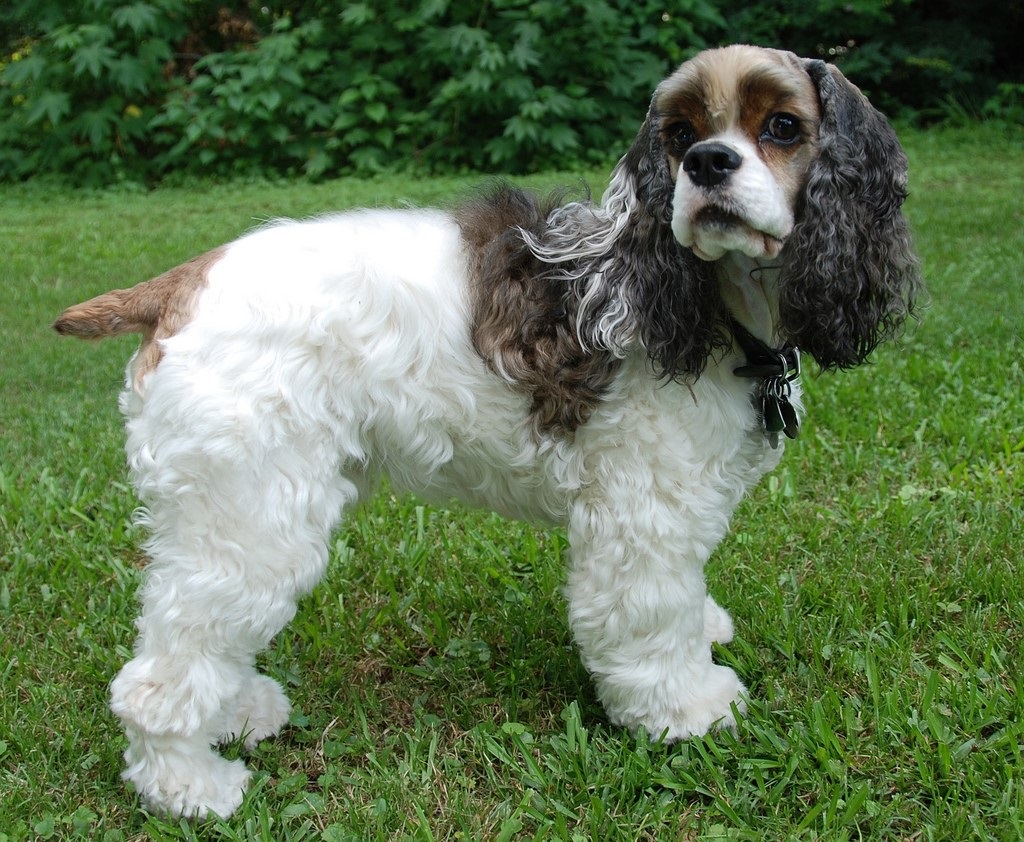

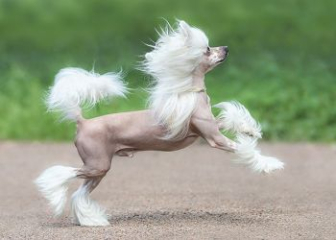
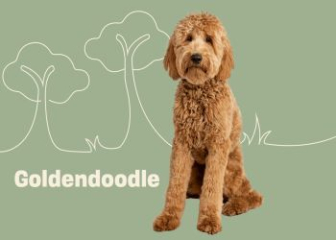
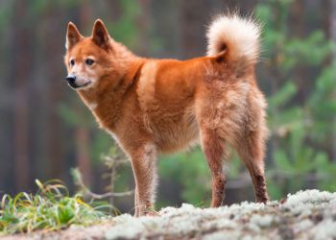
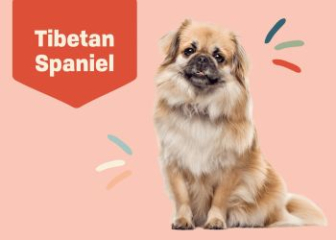
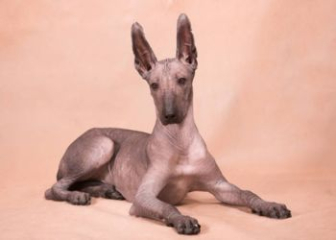
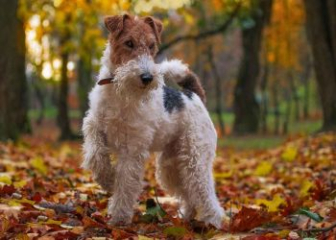


_350x250.jpg)

